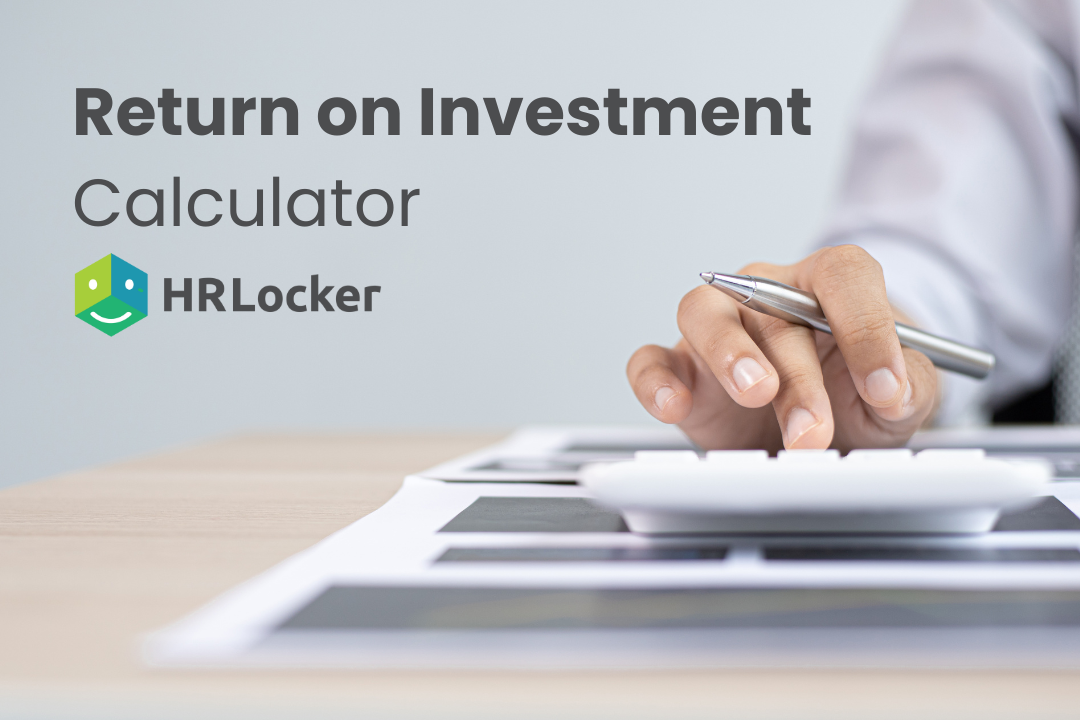Employee ROI Calculator
How much are you getting in ‘return’ from ‘investing’ in your employees?
Calculate Your Potential Employee Return on Investment
What is Employee ROI?
ROI stands for Return on Investment. It is also known in the HR industry as human capital ROI.
Business owners use the employee ROI in order to quantify the impact an employee has on their business and if they are worth the ‘investment’.
Employee’s knowledge, experience and skills, and how this can benefit your business
Employee ROI takes into consideration all the costs and expenses that go into employing an employee and puts it against the revenue said employee generates.
It helps business owners by having a calculation in place to quantify something that is very difficult to quantify and gives the employer an idea of whether or not an employee is worth the cost of keeping them in the organisation.

How to measure employee return on investment (ROI)
Employee ROI takes into account how much investment that team member has from the company (salary, training costs etc.) and then marks that against the output of the employee (hours worked, revenue generated etc.).
There are lots of different ways to measure employee ROI, depending on what you’d like to calculate. We’ve listed some of the main ways:

Employee productivity
As human beings, productivity is subjective. What might be a productive day to one person could be another’s downtime. But employees who feel valued and involved at a company are far more likely to be invested in the success of that business.
This ultimately leads to higher levels of productivity and better quality work being produced. You might find that the quantity of work increases too – and higher output can mean higher profits. Calculating employee productivity can also allow you to see whether incentives have an impact on productivity. This might differ from employee to employee, which is why it’s so important to remember that people are human beings and working out employee ROI is not an exact science.

Training investment cost
Not all employees will be the finished article when they join you – and that’s okay. But that does mean you need to take into account training investment costs when considering employee ROI.
Even long-term members of the team will need additional training at some point (think new software updates, new platforms etc.), so it’s important to factor this into each employee’s ROI.

Employee absenteeism
We all have sick days. From the need for mental health breaks to chronic illness, there are lots of reasons why employees might be absent. Having a transparent and open relationship with your team ensures that they don’t feel the need to hide sickness or take unnecessary sick days because they just don’t feel motivated.
Regardless of the reason, sick days cost your business time and money, especially if they’re sporadic and often, which doesn’t allow for proper planning to be put in place.
Decreasing employee absenteeism can help with improving employee ROI, as well as increase company morale. The better-engaged employees are with the business, the less likely they’ll feel the need to take unplanned leave. It also stops the knock-on effect that can occur when team members take sick days and their work gets passed to another colleague, causing frustration.

Employee turnover
If your company has a high turnover rate of staff, this can set off warning bells with potential employees, limiting your reach of great hires. It can also be off-putting to clients, who may have gotten used to dealing with a certain member of the team, only to be passed around time and time again.
The more engaged an employee is, the less likely they are to want to leave. This ultimately leads to a lower staff turnover rate, better client relations, and a higher ROI per employee.
In this unpredictable market, stability is important to both clients and employees.
Employees are likely to be your greatest operational outlay
And this is a good thing! It means you’re investing in your team and your future, hiring individuals who can really make an impact on your business.
But in times of rocketing inflation, economic crisis, and uncertainty about the financial horizon, quantifying your employee return on investment (ROI) is vital. It ensures that your team is full of productive and happy employees, as well as it helps engage further with those who might be struggling.


What are engaged employees and why are they important?
When we’re engaged in the workplace, whether that’s through our relationships with our co-workers or with the work we produce, we want to perform well and be a part of the company’s goals and objectives. If you’re looking for the hard stats to back this up, Gallup’s 2016 meta-analysis identified that an engaged workforce enhances profits by 21% and can experience 24% – 50% less turnover.
We develop emotional attachments with our connections to colleagues and clients, especially when our beliefs and values match those of the company and the people we work with and support.
What makes them happy?
An engaged employee is far more likely to be productive, care more about the work they’re producing, spend less time off sick, and retain clients and customers. However, in order for these outcomes to happen, employees need to be actively engaged by the company, which is why having an employee engagement process is so important.
Before you can start successfully measuring the ROI of an employee, you need to understand what makes them tick – as both human beings and as part of your workforce.

Why ‘soft skills’ are important for employee ROI
We’ve looked at the hard facts when it comes to employee ROI - output, productivity, and attendance are all important to making those calculations. But what about the intangibles? Let’s look at why ‘soft skills’ are important for employee ROI (but why you can’t always measure them).
Company culture

Accountability

Distractions
Company culture
Having a strong company culture that enables employees to align their values is a great way to create more engaged team members. But this isn’t something that can be forced, it needs to organically occur. Defining your values and beliefs is key to helping staff work out whether they want to be part of the culture and if they’re working towards that same end goal.
Although you can’t measure whether employees are striving to be part of your company’s culture, you can review this at 1-2-1s, as well as manage behaviour that doesn’t match what you’re trying to achieve.
Accountability
You’re only as good as your word – and so are your employees. Team members who hold each other accountable ensure that the work is completed and deadlines are met. Behaviour that causes this process to become disjointed creates a stressful working environment, reducing productivity and ultimately employee ROI.
Distractions
Businesses have a very delicate ecosystem. We’ve all been part of office politics and gossip at some point and felt the impact that this can have. Distractions that affect employee ROI include frustration towards other colleagues for not completing work on time or to a satisfactory standard; blame culture, or focusing on the negative and not creating solutions.
Employees who find it difficult to overlook these distractions and become consumed by them limit their own productivity and reduce their own ROI.

Measuring employee ROI is not an exact science
But there are a few formulas that can help. Ultimately, it comes down to ensuring your company culture is organically grown and nurtured, so that employees can master those ‘soft skills’.
Engaged employees, working in a healthy environment and a thriving culture, are happy and productive, having a positive impact on your company. Our free employee ROI calculator enables you to see exactly what that impact is.
More HRLocker Calculators
Are you sure that you know everything?
Are you ready to automate your HR processes?
No contract, No credit card, No funny business, Just great HR software!
Request 14 Days Free Trial




